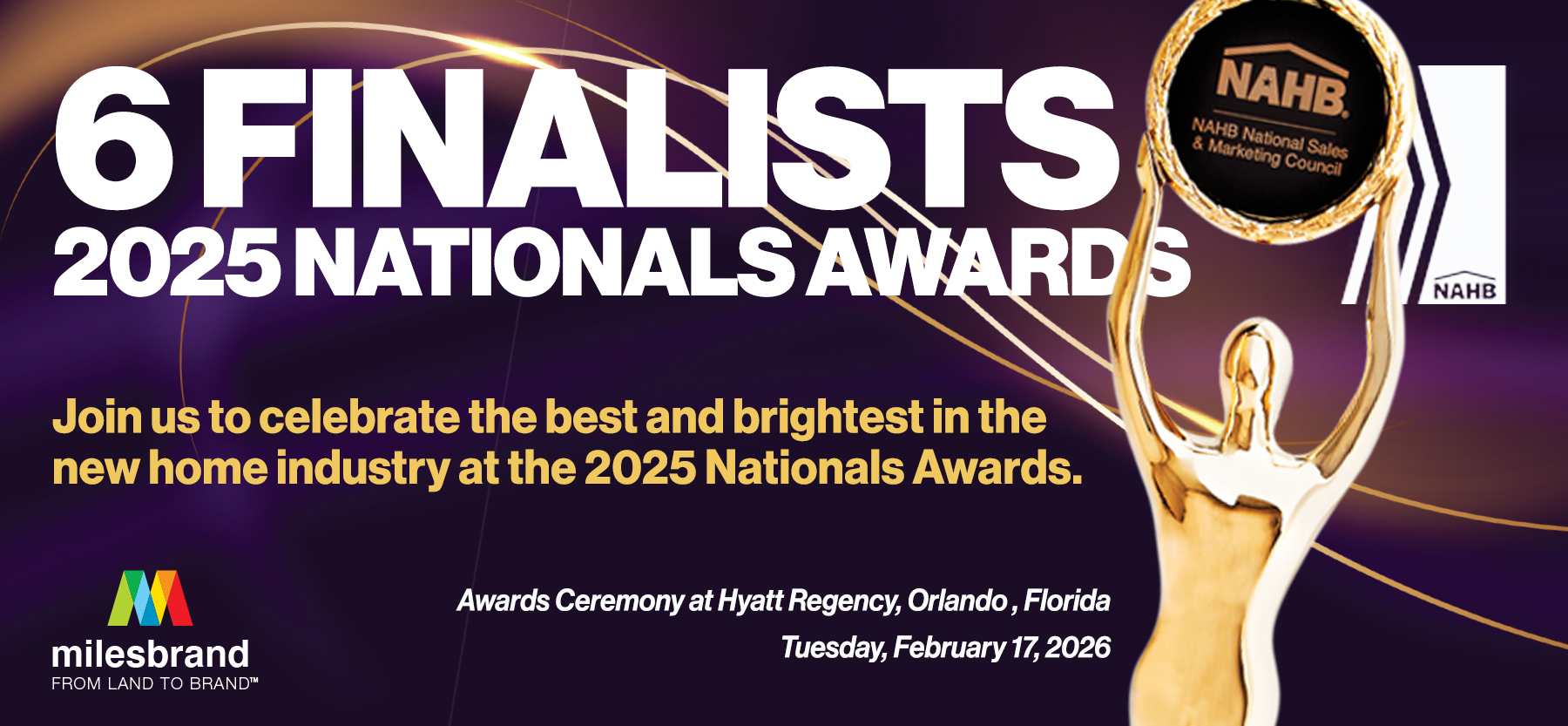August 24, 2022
6 Tips to Align Home Builder Marketing Channels
For a home builder or developer using multiple agencies to supplement its in-house staff, it can be a challenge and rather difficult to keep all partners in and out of house on the same page. Even within your own marketing department the struggle can be real. Just think about all the various moving parts involved – website, social, branding, email marketing, PPC, campaigns, search engine optimization (SEO) – you name it! It can be hard to keep messaging and graphics on point to present a unified front.
You need both tactics and strategies that align marketing and brand identity across all channels, anywhere in the world, to build that singular, consistent brand. Here are six tips to make aligning marketing and messaging across many channels simpler.
1. Create and Share a Master Brand Plan and Vision
A clear brand vision and master plan is important as you embark on your journey in developing your unified marketing plan. It’s important to be clear about your goals and expectations. Understanding where you company is and where you want it to go in the future, energizing people and bringing them together with a common focus is all equally important.
A master plan and vision is an essential part of the strategic planning process and helps with improving teamwork and planning. Not only in project management within your home building company, but master plans can be used by individuals to prepare a strategy to achieve their own personal goals as well. Here’s how to form and effective master plan and vision in six easy steps.
- Define your goal.
- List the steps to be followed
- Prioritize tasks and add deadlines
- Set Milestones
- Identify the resources needed
- Visualize your master plan
- Monitor, evaluate and update
Successful visioning and plan making can benefit from external facilitation that provides input and helps bring different partners together.
2. Create Brand Guidelines and Standards
If you haven’t done so already, your company should have a Brand Guidelines and Standards document with accompanying logos, colors and graphics that covers exactly how materials related to the company’s brand are presented. There are many factors to cover here, so make sure you include:
- Logo Configurations including official logos, specifications for use with brand promise or tagline, logo backgrounds and minimum clear space requirements
- Brand Color Palette including primary, secondary and tertiary colors if applicable
- Typography Font and Font Usage including headlines, body copy and callouts. This would also include samples of typography in print and digital formats
- Lists of words/phrases/concepts/brand promises to include or avoid.
- A writing style guide, covering matters like vocabulary level used, casual vs. professional language use and point-of-view
- On that last point, it’s important to be detailed, particularly where standard writing rules are hazy. Does your company use Oxford commas in promotional materials? Do you put one space or two spaces after a period? Standardize these details and use a style guide as a reference.
It is important to always be aware if all your marketing efforts are in line with your Brand Guidelines and Standards. If not, you are sending mixed messages to prospective home buyers and at risk of losing trust with your target audience.
3. Understand Your Audience - Build and Share a Target Audience Profile
Identifying your target audience is the foundation of your marketing strategy. This entails understanding who your ideal prospects and customers are, who are your competitors as well as the core pain points that your community or home design solves.
A. What is a Target Audience?Creating a target audience is essential for knowing where to focus marketing efforts. This helps define the target customer and what they care about. The practice of understanding the target audience, the words they use, the benefits they enjoy, and why they buy your homes or why they are drawn to your community helps to create content that connects.
This knowledge becomes actionable for your marketing agency or team when you document it in the form of a real estate persona. Your marketing and real estate persona is a document that details your target audiences who, what, when, where and why, in addition to understanding where they are in their buying cycle and life stage.
B. Defining Your Target Audience
The goal here is to attract more home buyers who have similar goals, aspirations, pain points and challenges as your most satisfied homeowners.
Begin asking yourself:
- Who are our existing home buyers and homeowners?
- What qualities do our home buyers and homeowners share?
- What caused these home buyers to purchase a new home? And why did they select a specific community for their family?
- Are they first time buyers, move-up buyers, active adults, etc.?
- What do our home buyers gain by choosing us (instead of the competition)?
From here craft your target audience statement – “(Insert your company) creates homes and communities to attract (insert target audience) so it can (insert desired outcome) better.” This framework enables the marketing team to craft effective content.
C. Launch a Home Buyer and Homeowner SurveyThe best way to reach an audience like your existing home buyers and homeowners is to understand why current home buyers and homeowners selected you has a home builder or developer for their new home or community. An easy way to do this is to conduct a home builder customer survey with tools like SuveyMonkey or Crowdsignal to ask your home buyers and homeowners questions like:
- What is the primary reason you selected our (home building company, home design or community)?
- Why did you choose our (home building company, home design and community) over other homes in the market?
- What was the most significant difference between our new home designs and communities compared to other options in the market?
- How would you briefly describe your home buying experience with us?
- Would you recommend us to friends, family or co-workers who are searching for a home?
- What was your primary reason for moving into your new home?
Dissect the results for trends and commonalities in word choice, experiences, pain points, challenges, benefits and emotions and include them in marketing and real estate persona template. Surveys can easily be distributed via email and provide invaluable information to your marketing agency and team.
4. Set Up a Library of Shared Materials
Set up a central repository where ALL marketing assets and materials are deposited. This way everyone in your organization and all marketing partners can access and use materials as needed. This should include logos, photos, flyers, print ads to online videos.
When you work as a team with different partners, a shared library allows your team to store and access files that team members work on together. And programs like Drop Box, Google Drive, OneDrive or SharePoint that connects each team member to all shared libraries are also helpful.
5. Choose the Right Strategic Partners
Even without significant new technology investments or major strategic shifts, you can still do a lot to keep your brand in alignment. Simply pick the right partners who can assist you with meeting your marketing needs and do not veer from your Brand Guidelines and Standards. Partnering with the right strategic branding and marketing agency can offer you all the services you need to manager your branding and marketing efforts, both digital and traditional. Find a partner who has the expertise to help you reach your company goals.
6. Conduct Weekly or Monthly Meetings with all Strategic Partners
Meetings function to quickly create shared perspectives in a group. Teams need to meet on a regular basis to maintain momentum, change course, brainstorm or just synergize.
Kickoffs, retrospectives, emergency meetings, planning sessions and workshops fall under the definition of “changing course.” A team’s regularly scheduled meetings, such as weekly status calls should maintain work momentum and strengthen the relationships between team members or, in this case, strategic partners. The frequency of these regular meetings sets the team’s work cadence and can enhance the growth of a strong relationship.
A meeting cadence works very much the same way – setting the pace that keeps a group pulling together fast enough to win the race, but not so fast that they wear out before crossing the finish line.
If you go too long between meetings, the work and results may suffer. Teams that don’t meet often enough drift out of alignment, lose information and weaken the interpersonal bonds that help them work together. Whereas, meeting too often makes the teams get frustrated and worn down. All that said, what is the proper meeting cadence? Is it weekly? Monthly? Quarterly?
As much as there needs to be a straightforward answer to this – there isn’t. The recommended meeting frequency depends on the following factors
- Urgency and importance
- Stability
- Work Function
- Interdependence
- Location (or Lack Thereof)
However, we know that most teams work best when they establish an effective meeting cadence. And a cadence that is too fast or two slow proves counterproductive. Set a frequency that works for your team whether that is weekly, monthly or quarterly to keep tasks moving forward and all of your marketing in synch.
Searching for Your Strategic Branding and Marketing Power
Looking to align your home builder and developer marketing channels more effectively? Are you in need of a strategic partner who understands the real estate market? Milesbrand is here to help. We are a full-service agency dedicated to the real estate industry offering branding services plus traditional and online marketing services. Contact us today to for next steps!












